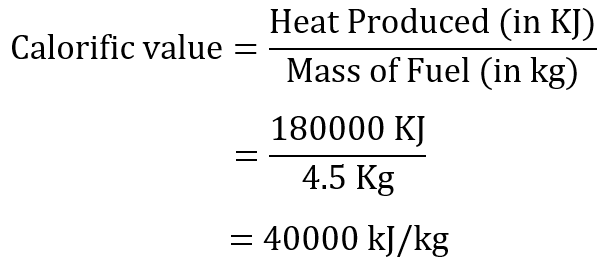NCERT Solutions for Class 8 Science Chapter 4 Combustion and Flame help students to clear all their doubts. These solutions provide you with the answers to all the questions given in the NCERT textbook. CBSE Class 8 Science Chapter 4 Solutions is prepared by expert teachers as per the latest CBSE syllabus and guidelines.
Solving NCERT Solutions will help you to understand the concepts related to Combustion and Flame. NCERT Solutions for Class 8 Science Chapter 4 contains an in-depth explanation of each question of NCERT Science textbook. These solutions cover important concepts in different patterns like MCQs and short answer questions, worksheets and more and help you top score good marks in the exam.
Class 8 Science Combustion and Flame Questions and Answers
Exercise Questions
Question 1: List conditions under which combustion can take place.
Answer: Conditions under which combustion can take place are as follows:
- Fuel is required
- Air (oxygen) is necessary.
- Ignition temperature is required.
Question 2: Fill in the blanks
(a) Burning of wood and coal causes __________of air.
(b) A liquid fuel, used in homes is__________ .
(c) Fuel must be heated to its ____________ before it starts burning.
(d) The fire produced by oil cannot be controlled by___________ .
Soln: (a) Burning of wood and coal causes Pollution of air.
(b) A liquid fuel, used in homes is Kerosene.
(c) Fuel must be heated to its Ignition Temperature before it starts burning.
(d) The fire produced by oil cannot be controlled by Water.
Question 3: Explain how the use of CNG in automobiles has reduced pollution in our cities.
Answer: CNG produces very small amounts of harmful products like Sulphur dioxide, oxides of nitrogen, oxides of sulphur etc. CNG is a cleaner fuel.
Question: Compare LPG and wood as fuels.
| LPG | Wood |
| Produces more energy | Produces less energy |
| It doesn’t release smoke and other pollutants | Wood produces a lot of smoke which pollutes the atmosphere |
| The usage of wood to a large extent causes deforestation. | It is a cleaner fuel |
| Leave no residue | Leave ash as residue |
| Easy to store & transport | Need more space to store |
| The calorific value of wood ranges between 17000 to 22000 kJ/kg | The calorific value of LPG is 55000 kJ/kg |
Question 5: Give reasons:
(a) Water is not used to control fires involving electrical equipment.
(b) LPG is a better domestic fuel than wood.
(c) Paper by itself catches fire easily whereas a piece of paper wrapped around an aluminium pipe does not.
Answer 5: (a) Water is not used to control fires involving electrical equipment because it may conduct electricity and harm those trying to douse the fire.
(b) LPG is a good fuel as compared to wood as it readily available and it is cheap. It burns easily in the air at a moderate rate and it produces a large amount of heat. It does not leave behind any undesirable substances.
(c) Paper by itself catches fire easily whereas a piece of paper wrapped around an aluminium pipe does not because the ignition temperature of paper is low as compared to the paper wrapped around an aluminium pipe.
Question 6: Make a labelled diagram of a candle flame.
Answer:

Question 7: Name the unit in which the calorific value of a fuel is expressed.
Answer: The calorific value of a fuel is expressed in a unit called kilojoule per kg(kJ/kg).
Question 8: Explain how CO2 is able to control fires.
Answer: CO2, being heavier than oxygen, covers the fire like a blanket. Since the contact between the fuel and oxygen is cut off, the fire is controlled.
Question 9: It is difficult to burn a heap of green leaves but dry leaves catch fire easily. Explain.
Answer: The ignition temperature of green leaves is higher than that of the dry leaves, so dry leaves catch fire easily.
Question 10: Which zone of a flame does a goldsmith use for melting gold and silver and why?
Answer: Goldsmith uses the outermost zone of the flame for melting gold and silver because it is the hottest zone (complete combustion) of the flame.
Question 11: In an experiment, 4.5 kg of a fuel was completely burnt. The heat produced was measured to be 180,000 kJ. Calculate the calorific value of the fuel.
Answer:

Question 12: Can the process of rusting be called combustion? Discuss.
Answer: No, as rusting is a very slow process as compared to combustion and the heat evolve in combustion is much more than rusting. Rusting can take place at room temperature but combustion needs an ignition temperature.
Question 13: Abida and Ramesh were doing an experiment in which water was to be heated in a beaker. Abida kept the beaker near the wick in the yellow part of the candle flame. Ramesh kept the beaker in the outermost part of the flame. Whose water will get heated in a shorter time?
Answer: The outermost part of the flame is the hottest one, so Rakesh’s water will get heated in a shorter time.